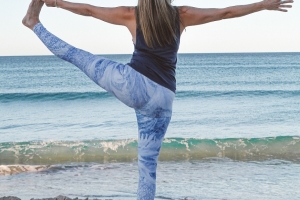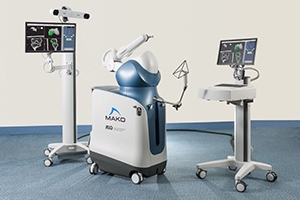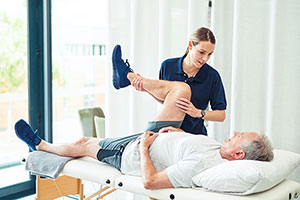Trochanteric bursitis refers to the inflammation of the bursa (the fluid-filled sac situated near the joint) of a patient's hip. This swelling causes lateral hip pain that can seem unbearable. However, wIth the right advice from a healthcare professional and effective stretching exercises, this condition is manageable and treatable.
Trochanteric bursitis often occurs due to repetitive microtraumas caused by running or exercising, or from a significant injury like a fall. Usually, treatment for trochanteric bursitis includes pain medications like non-steroidal anti-inflammatories (NSAIDs), stretching and physical therapy. Sometimes surgery is necessary to repair the bursa when non-operative solutions are ineffective.
Trochanteric Bursitis: Effective Exercises for Relief
At the American Hip Institute, we recommend our patients try out trochanteric bursitis stretching to relieve their pain. Here are a few exercises and stretches we recommend if you struggle with trochanteric bursitis. Keep in mind this is not an exhaustive list. If you find any of these trochanteric bursitis exercises to be too challenging, or causing more pain, speak to a physical therapist for more recommendations.
Pigeon Stretch
The pigeon stretch has ties to yoga and is known to help promote better hip health. Many physical therapists and orthopedic doctors recommend this stretch for managing the pain caused by trochanteric bursitis. It opens the hips and relieves discomfort. Here is how we recommend performing this exercise for maximum benefits:
- In the sitting position, bend one knee in front of you, extending your other leg straight behind your body
- Pull the front heel towards your opposite hip
- Point that hip downwards to feel it begin to open
- Place your hands on your thigh and hold
- Walk your hands in front of you and rest your torso on the knee
- Repeat with the other leg
Hip Flexor Stretch and Rotation
With this trochanteric bursitis exercise, you can loosen your hip muscles along with different muscle groups in the body. It is effective and will become easier over time, as you incorporate the hip flexor stretch and rotation into your regular regime. Here’s how to do this exercise:
- Place one knee touching the floor
- Bend the other knee at a 45-degree angle in front of you with your foot on the floor
- Lean forward to stretch the knee that is touching the floor
- Squeeze your glutes (buttocks muscles) to stretch the hip flexor
- Hold the position between 30 seconds and two minutes
- Repeat with the opposite leg
Glute Side Lifts
This exercise is also known as the glute med side lift. We recommend performing this stretch with a resistance band. It works both your glutes and abdominals, along with giving your hip a good workout. Be cautious with this stretch and go at your own pace to not worsen your condition. Here’s how to do the glute side lift stretch:
- Place a resistance band around your ankles
- Balance on one leg
- Swing one leg out to the side
- Hold position for two seconds
- Bring leg back to its original position
- Do twenty reps for each leg
Single-Leg Bridges
People use this exercise to work out their hamstrings, glutes and quads, but it is also one of the trochanteric bursitis exercises that helps relieve pain. Single-leg bridges are effective for managing pain from other hip issues and medical conditions related to the hip area. To perform a single leg bridge, we recommend the following:
- Lie with your back on the floor
- Place palms down next to you alongside each leg
- Bend your knees
- Extend one leg straight up towards the ceiling
- Slowly lift your hip, pushing your heel into the floor as you lift your pelvis into the bridge position
- Slowly lower your pelvis, careful not to go all the way to the floor
- Do 15 reps
- Repeat with the opposite leg
Clam Shells
Clam shell exercises assist with balancing the muscular pressure between your inner and outer thighs and your pelvic floor. You will need a resistance band for this trochanteric bursitis exercise.
- Lie on your side with your knees bent at a 45-degree angle
- Place the resistance band around your lower thighs, just above the knees
- Place an arm under your head for support
- Pull in your stomach and abdominal muscles
- With your feet touching each other, raise your top knee, stretching the band and opening your hips
- Hold the position for a few seconds
- Do this 20 times on each side
We also recommend the reverse clam shell for trochanteric bursitis stretching. The reverse clam shell exercise helps relieve lower back pain, which often occurs when someone has an altered gait due to hip pain. You can use a resistance band for this exercise, but it is not required. To do a reverse clam shell:
- Lie on your side and bend your knee slightly
- Place an arm under your head for support
- Rotate the top foot outwardly to face the ceiling
- Keep your knees together
- Do this for 10 sets
- Repeat on the opposite side
Better Options to Treat Your Trochanteric Bursitis
Although trochanteric bursitis exercises can help with pain relief, we recommend seeing a medical professional for the best treatment options. At the American Hip Institute, we provide cutting-edge, minimally invasive treatment for our patients who struggle with hip pain. Our medical professionals have worked with many patients just like you, looking for a better solution for managing their trochanteric bursitis.
Are you looking for effective ways to treat your trochanteric bursitis? Contact us today for professional medical advice or request an appointment.




